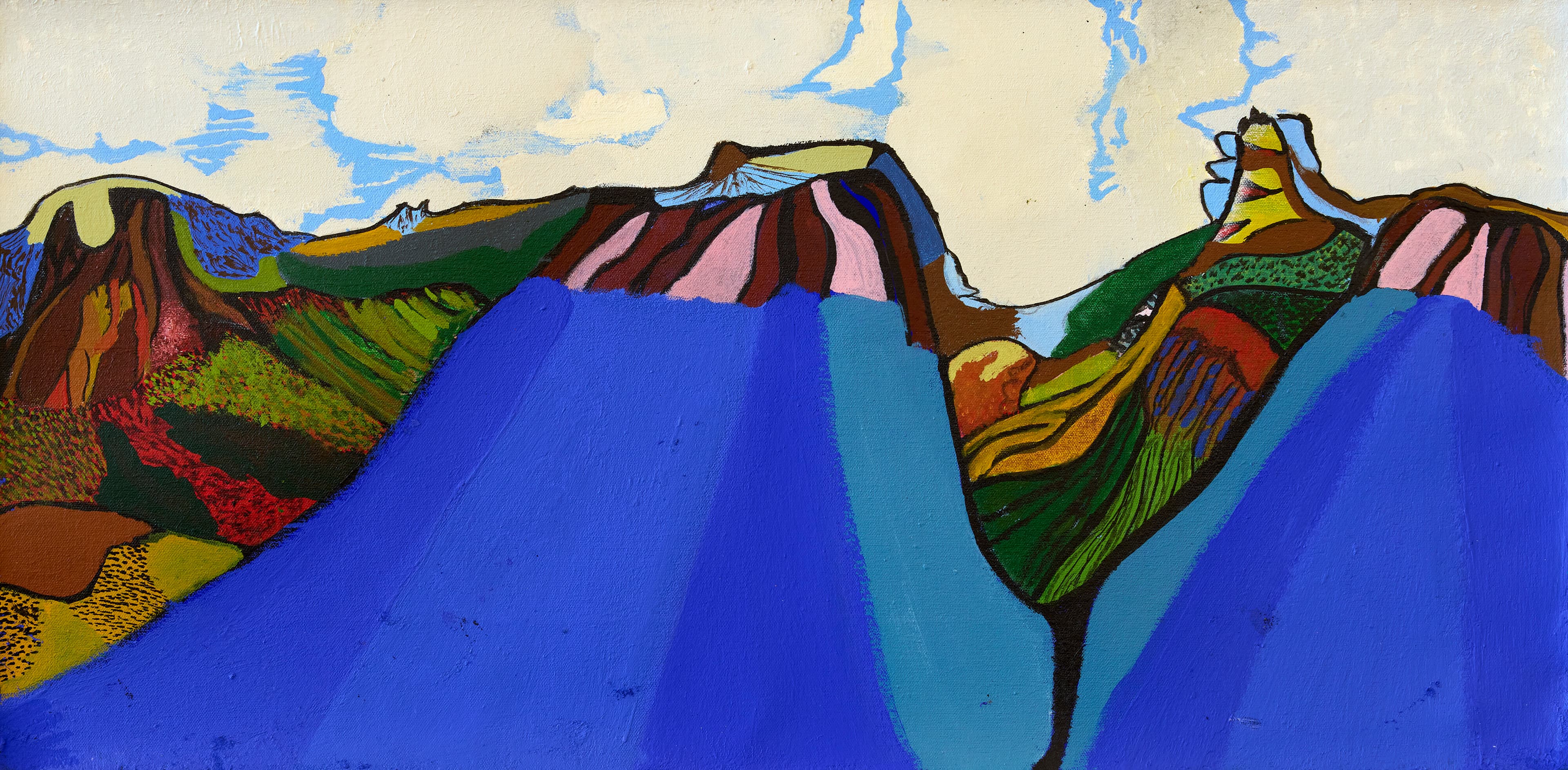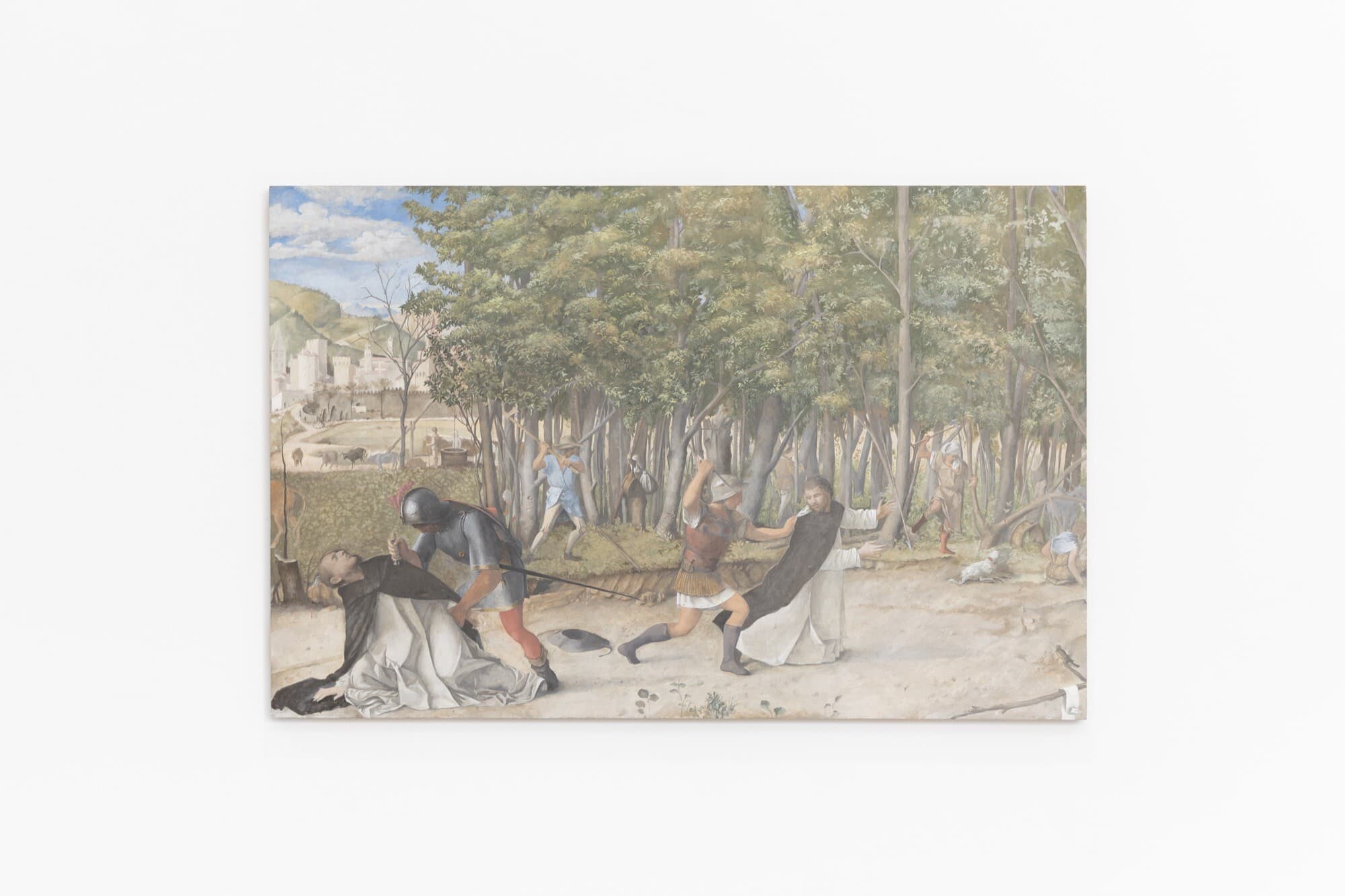Soft Centre Boiler Room stage at White Bay Power Station. Credit: Billy Zammit
Soft Centre
Anabelle Lacroix
For days, the fast beats of Singeli music resonate in my head after a concert that ended mid-track precisely at midnight. This moment marked the closing of Soft Centre festival’s main program in the large industrial vault of White Bay Power Station. Performed by the Tanzanian mother-daughter duo Queen Asher and Rehema Tajiri, who represent a scene that originated in all-night woman dance parties, the concert solidified Soft Centre as an organised community ritual that cherishes collaboration and lineages between generations, artists, practices, and ideas. Singeli has reached global audiences through these artists and Ugandan-German festival Nyege Nyege, which similarly revels in the intersection between traditional music and experimental genres. This connection makes clear the festival’s intentions: to wrestle with the constraints of the music industry and its relationship to colonial and patriarchal regimes locally and internationally.
This year, the festival’s ambitious four-day program continued to explore the relationships between humans and machines in our contemporary age—a critical stance at the heart of the yearly venture since it began in 2017 as the antonym of “hard core”. I start with the sonic residue of Asher and Tajiri because this burst of African Dance Music contrasted with much of this year’s focus on noise. The first day opened with distorted pedal loops by Gomeroi guitarist Liam Keenan, who set the tone for the festival’s dark industrial resonances with plenty of feedback. With up to six events happening simultaneously, mixing music and performance in the corners and back ends of this spectacular venue, there was no singular throughline in the program.
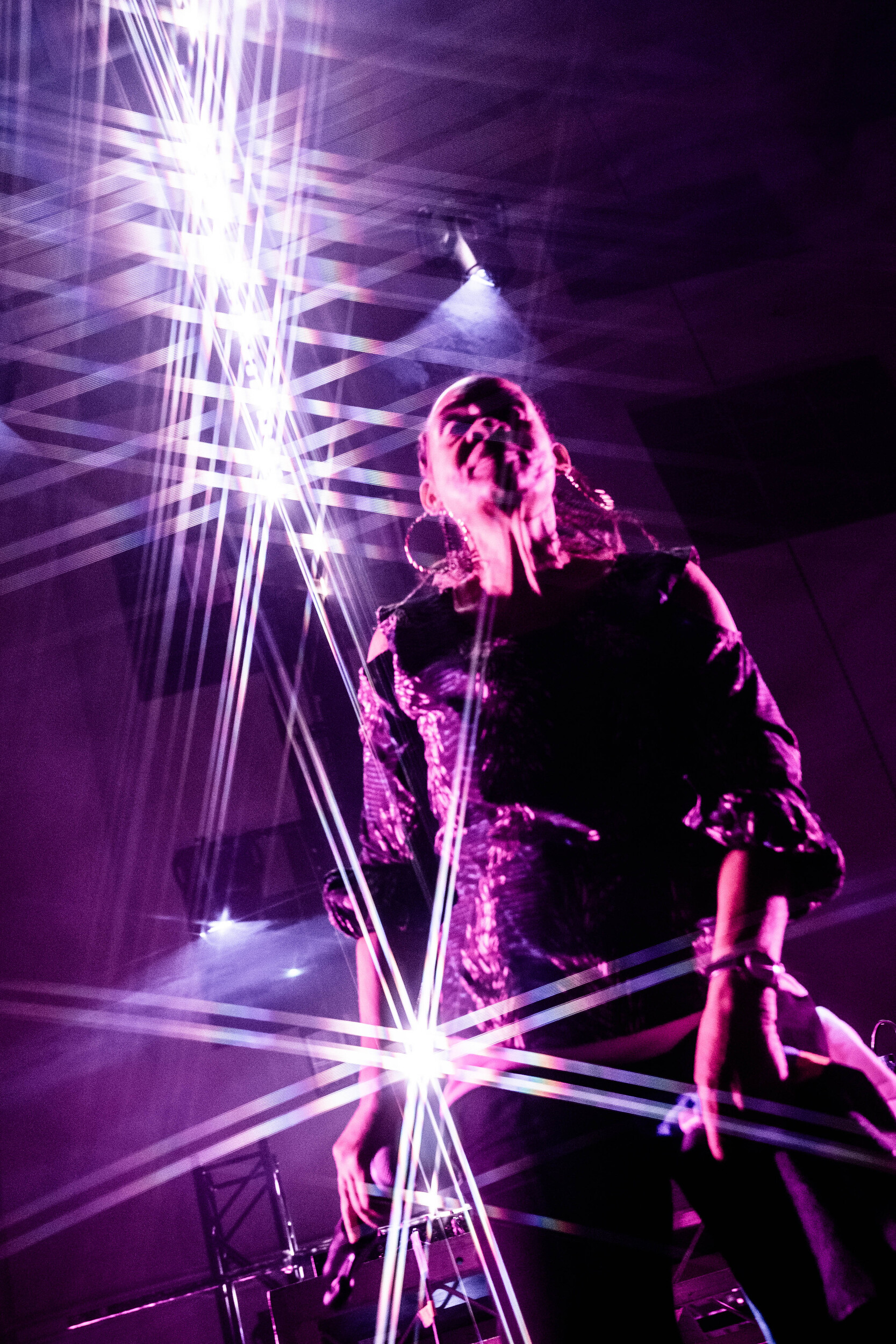
Queen Asher and Rehema Tajiri, Soft Centre Festival 2025. Credit: Soft Centre
Soft Centre is a festival of “ecstatic art, sound and new media”. But my interest here lies in the subtext: its curatorial method. I’m interested in how Soft Centre urges us to reflect on what it means to curate a transdisciplinary festival in the digital age. The festival team, comprising Jemma Cole, Thorsten Hertog, Audrey Pfister, Sam Whiteside, and Krishtie Mofazzal, have drawn on a very diverse pool of artists to create a program that forges meaningful connections across radically different genres. I suggest the festival flirts with the mainstream only to reinforce a playful critique of the music industry and the technologically mediated consumption of contemporary culture. At its core, a gentle approach to curating mediates the tension between hypervisibility and the underground.
My thinking for this review was set in motion when I attended last year’s festival in Melbourne and witnessed media scholar McKenzie Wark’s provocation to take “refuge in the unseen”. As a trans woman, Wark reflected on the dark and transcendental experiences of raving as a refuge, dwelling in self-organised spaces rather than commercial ones. During a Q&A session, the audience discussed the underground as a refuge in Wark’s writing and how this could be expanded as a contemporary strategy for production and survival. However, this seemed to fail when considering the festival’s own approach to high-value stage production and communication. While red lights flooded Trades Hall last year in Melbourne, the staging climbed an exponential curve at White Bay Power Station. A twelve-meter-high LED screen served as an iPhone-like canvas for UK artist and musician Klein’s powerful set with internet-sourced social-media-like videos that acted as vignettes for black lives, caught between humour and surveillance. Many acts also played with sound and image synchronisation on the Boiler House stage. A vertical beam of light, rather than a horizontal, front-facing traditional rig, responded to the building’s architecture, occasionally flooding the audience in the great depth of the South Turbine. Last year, I wondered about alternative strategies—can there be refuge in the “seen”? I sensed that Soft Centre offered a different kind of model when compared to the DIY underground and the hard-to-find, and its ambitions energised me.

Pink Siifu, Soft Centre Festival 2025. Credit: Soft Centre
Soft Centre negotiates a tension between hypervisibility and the shadows, blurring that line between the spotlight and what’s outside its remit, between popular culture and its “subs”. Festival directors describe wanting to create a “destination festival”, a world stage for the local underground, “a different space to exist”. I particularly appreciated the informal pairing of local and international artists, such as VV Pete with American Pink Siifu’s confident, playful and distinctive takes on Rap with heated dancefloors. The festival also provides a platform for experimentation, pushing the work of Australian artists across generations with Robin Fox’s new site-specific edition of his famous synaesthesic laser show Triptych (2022–), which I could only catch the last minutes of, or Bhenji Ra’s collaboration with musician Karina Utomo.
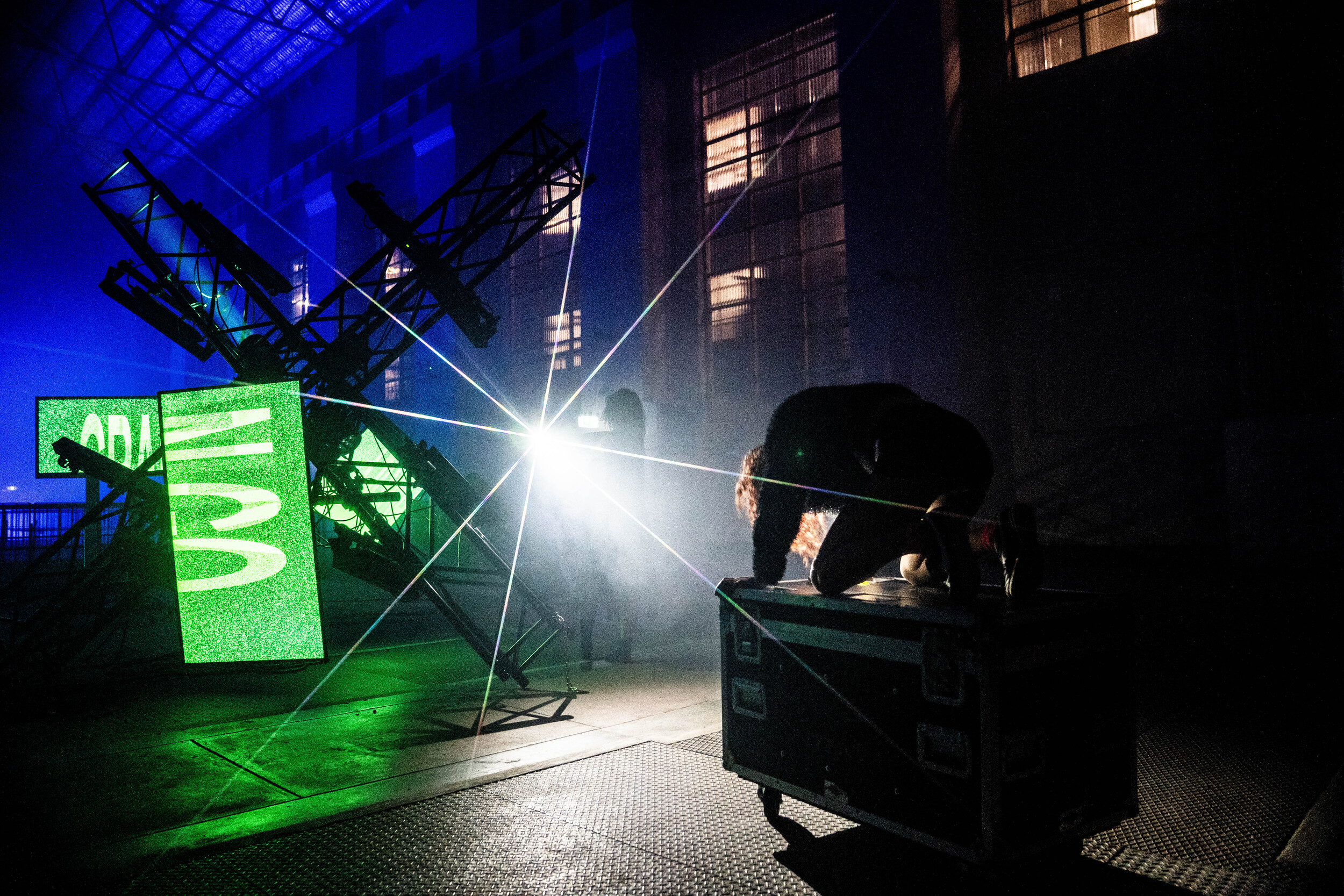
House of Vnholy, with Capital Waste, Marcus McKenzie, Eugene Choi, and Makeda, Soft Centre Festival 2025. Credit: Soft Centre
Performance art is an increasingly popular medium, especially when considering how art institutions instrumentalise it to create spectacular gestures towards diversity. Here, Soft Centre demonstrates a self-awareness that refutes tokenisation. This year’s staging and curation emphasises spectacle as a critical strategy with a focus on the trans*body. On arrival, one could encounter transhuman Stelarc perched on a ready-made plinth and moving his robotic arm, bathing in a soundscape of blips generated by data received from his body. Trans dancers and artists Andreas Illés and Mara Galagher performed naked behind the glass of the Boiler House control room, deliberately positioning us as voyeurs of their energy-fuelled bodies. The audience could pick up headphones that contracted this distance, creating a feeling of closeness through whisper and soft song. The staging of the performance reinforced an awareness of one’s positioning when intimate moments were disrupted by a performer throwing and kicking the microphone across the room.
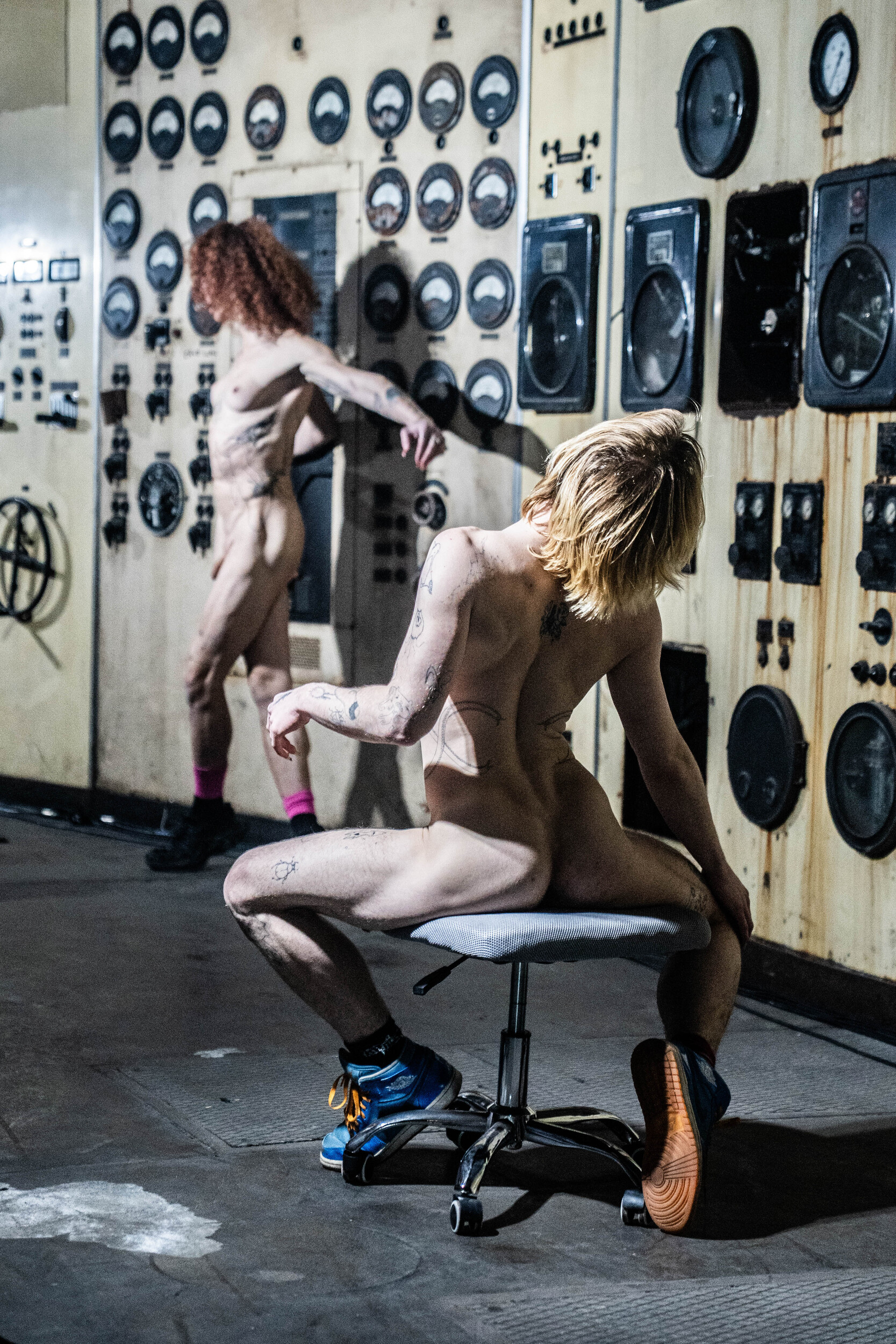
Andrea Illés and Mara Galagher, Soft Centre Festival 2025. Credit: Soft Centre
A renegotiation of visibility also unfolded through the durational staging of many performances. Conscious of the accelerated temporality of late capitalism, the curators developed an idiosyncratic rhythm for the festival, filled with sharp contrasts between slow and fast BPMs. House of Vnholy, in collaboration with Capital Waste, Marcus McKenzie, Eugene Choi, and Makeda, performed all day and night, much like Illès and Galagher mostly did. The scale of the program prompted a short attention span attitude. But audiences would be rewarded when dedicating significant time to a work. Over the course of two hours, the Young Boy Dancing Group manipulated its audience, which formed around them as they performed outside among the crowd and beneath a movable LED strip. I caught a moment when the troupe broke into a doom-metal style ballroom scene, contrasting with the earlier slow-moving tableaux.
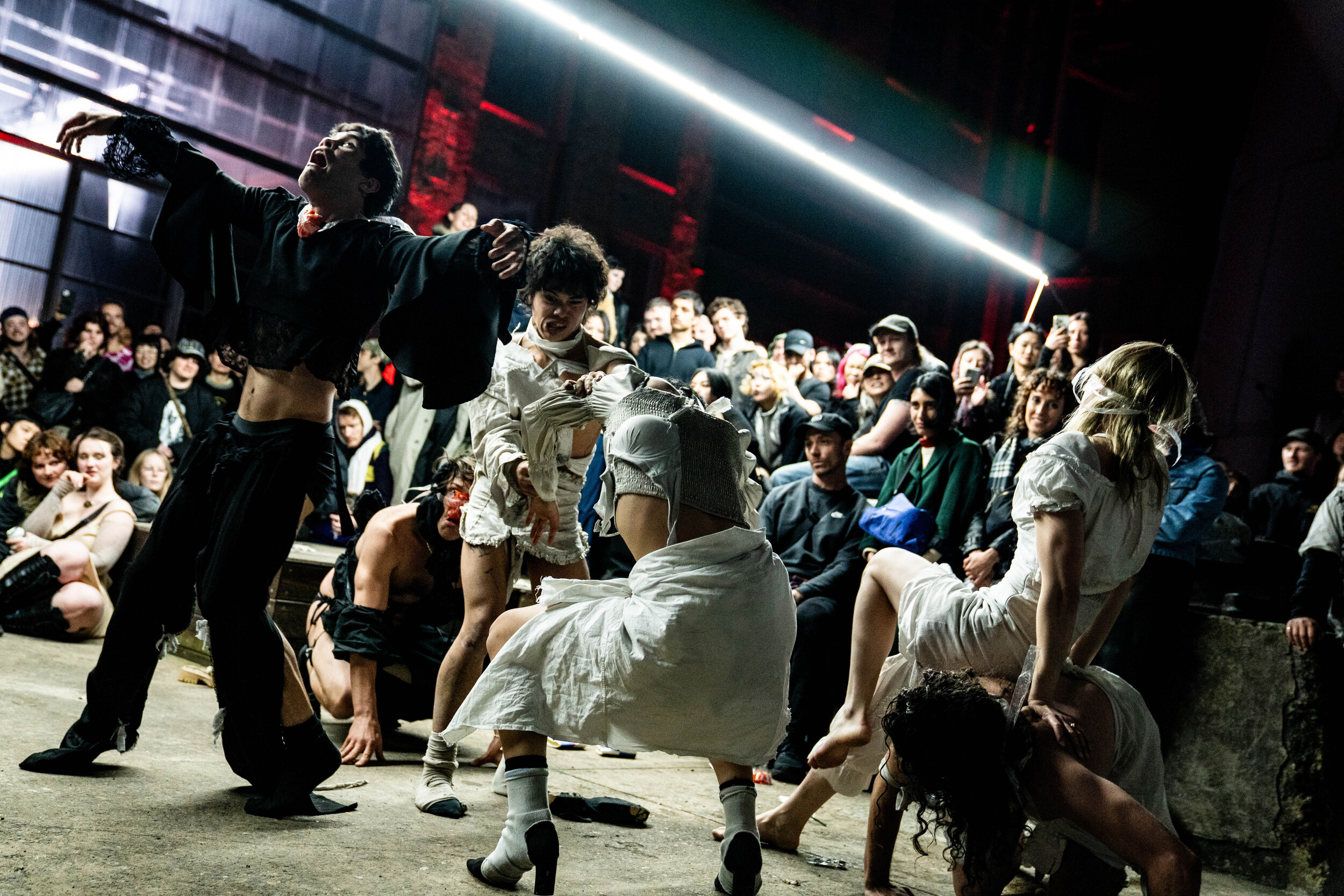
Young Boy Dancing Group, Soft Centre Festival 2025. Credit: Soft Centre
Inside the substation, stages were positioned to take advantage of balconies for watching from above, a game of seeing and being seen. The audience could move in a looping circuit that allowed regular glimpses of the House of Vnholy and its revolving performance around and onto a dystopian cross-like structure with movable screens that displayed live-feed video and messages in black capital letters—”WHY?” I caught Makeda lying on a production bin on wheels, holding up an inflatable dolphin, drifting. As a non-binary writer, watching trans*bodies and performances with choreographies emphasising drifting, beginnings and returns, and circumnavigations as methods of being neither here nor there, normalised trans feeling and trans expression. As such, the festival felt like a journey rather than a destination. These circular, unilinear temporalities are also found in the rave that Wark writes about, which, to me, also includes being out of sync with the world when attending all-night parties, such as the festival’s Late Night that followed Asher and Tajiri’s concert.
Soft Centre flirts with mainstream structures and the dominant order only to point to its absurdities. Mockery emerged as a pattern in the festival—in the faces of Young Boy Dancing Group grimacing, moving in circles around themselves, or the robotic pooping moves of Korean C-DJ trickster C Bong Sae, whose music controlled the crowd with huge breaks across jungle, trap, footwork, creating gaps with vastly different sounds and rhythms, mixing popular and traditional songs in a openly sarcastic manner. The absurd also featured in Friday night’s expanded cinema program Para.Cine at the Chauvel Cinema with Team Rolfes’s racing video game using motion capture live on stage or Tina Stefanou’s vaudeville character. Stefanou’s final noise-like opera-style vocalisation, timed with a projection of a black curtain closing on her like a shutter, was a curious and powerful ending. In echoing the absurdist performances of early twentieth century Dada artists, Stefanou reminded me that noise as an aesthetic can be a response to the absurdity of war, totalitarianism, and fascism. This gave me chills, thinking about the ongoing genocide in Gaza and the state of global political affairs more generally.
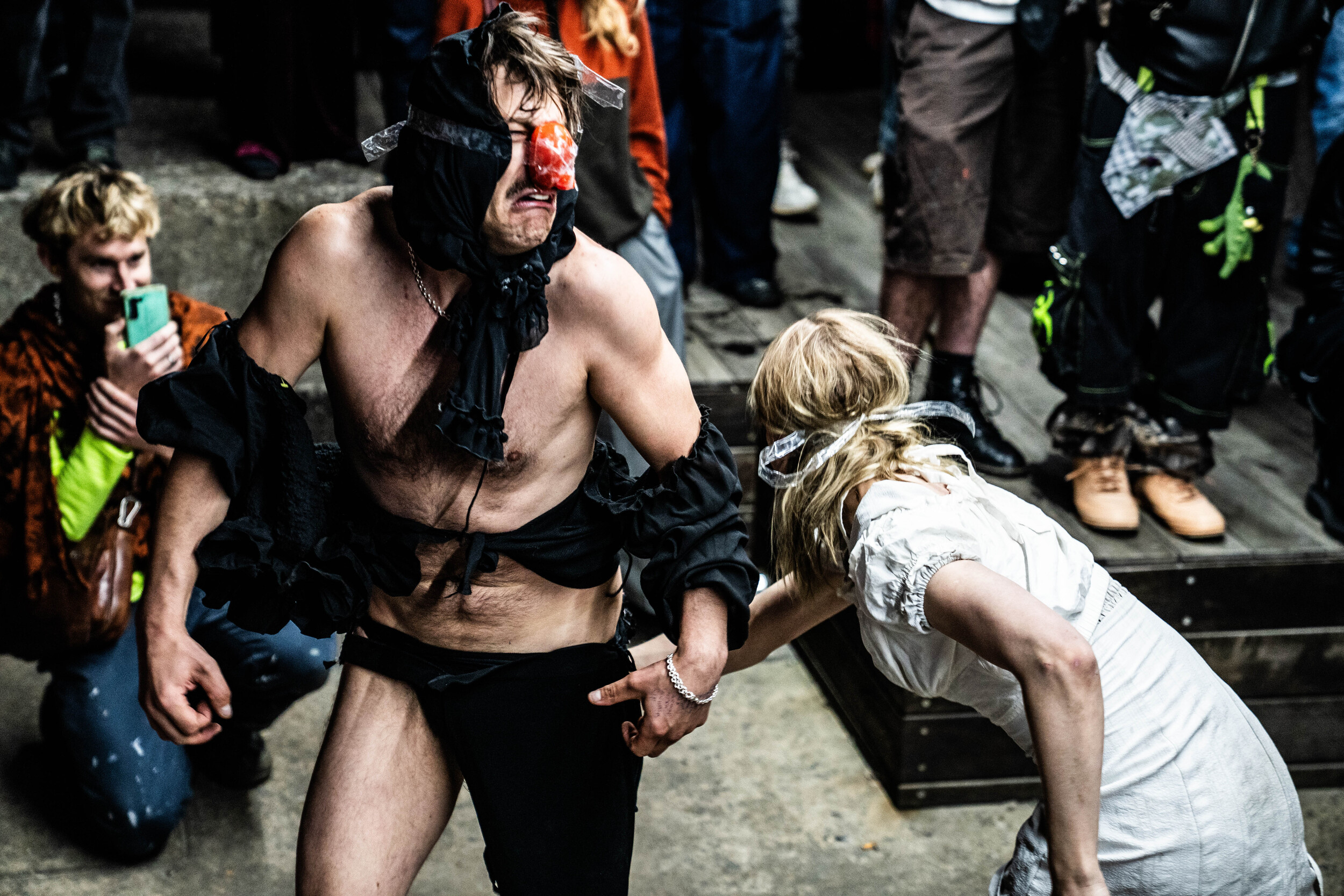
Young Boy, Soft Centre Festival 2025. Credit: Soft Centre
Responding to the context of White Bay Power Station, this year’s festival deployed “noise” as a broad thematic framework, designed to draw out the lineages of industrial and platform capitalism, reflecting on what it means to be human in the digital age. During the festival’s discourse program at Artspace, American scholar and journalist Liz Pelly dissected Spotify’s tactics, including its genre-reducing playlists and algorithmic predictions that encourage passivity and reinforce inequalities by favouring major labels. Poet and scholar Andrew Brooks urged us to think about noise as the colonial othering of non-Western sounds. Drawing on the sounds of Black Lives Matter protests, and DeForrest Brown (who performed in last year’s festival), Brooks elaborated on noise as a response to a crisis that makes societal demands, a language beyond comprehension to colonial ears. Noise thus calls for a fugitive listening, for defying classification and doing otherwise. As such, archivist Madika Penrith and ethnomusicologist Sam Miers demonstrated alternatives in a conversation that followed. They described their work on Yuin Country as organised around songlines, combining archival recordings of Aboriginal songs with recent expressions that might be found in a rap song or field recordings of the natural environment. Their methodology includes staging concerts and events with the community to empower all generations in the creation of a living archive.
This is when the festival’s subtext comes back in. The final panel emphasised the importance of collective methodologies. Strategies for sustaining artistic practices across Vietnam, Indonesia, and Australia were discussed between experimental music collectives Rắn Cạp Đuôi, Content.net.au (who also performed in the program), and Liquid Architecture’s current Inter.Sonix program. The latter is an alternative platform shaped by a scene rather than curated from above. The festival creates a soft centring for community building that is structural to the staged program. Collaboration is at the crux of the program, exemplified through international exchanges and an inaugural Aboriginal and Torres Strait sound residency. For me, curating is a civic act that takes place in public: an act of care for art and the communities that surround it. Soft Centre demonstrates that festivals deserve to be sites for platforming curatorial histories, just like exhibitions or institutions, especially as their curation creates connections across several years of programming.
Soft Centre set the scene for plenty of ecstatic moments with many entry points into its program. At a time when festivals are struggling to survive, Soft Centre demonstrates the relevance of transdisciplinary curating and collective making. I am excited to see a model for the presentation of live art and music that exceeds categories and plays with its own contradictions. Soft Centre shows that there is refuge in the “seen”, from the dancefloor and its balconies. There is refuge in the assembly of a festival crowd because we stand in public and in solidarity, as we do in protest.
Anabelle Lacroix is a curator and academic based in Eora, Sydney. Working with exhibitions, public programming and radio, they are interested in the overlapping fields of curating and writing, involving performance, sound, speech and publishing.

